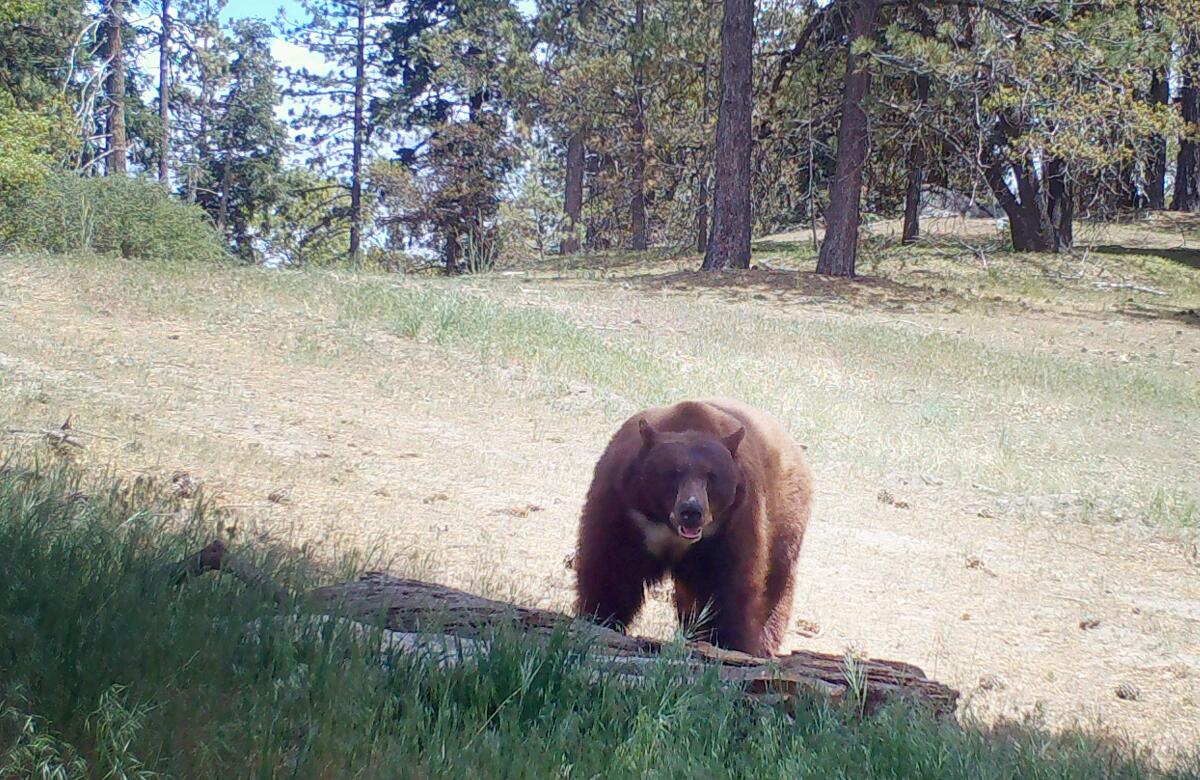People Build Closer to Nature, California Bears Move Right In
In California, as urban development encroaches into ever more previously wild spaces, an interesting and slightly ominous dynamic has revealed itself — black bears are increasingly wandering into human neighborhoods. This change is a symptom of larger shifts in land use, wildlife patterns, and the complicated interplay between humans and nature.
The New Neighbors
Black bears have been denizens of California's forests and mountains for centuries, but their collisions with humans are a growing concern. In recent years, reports of bears tearing into trash and searching for food in backyards and even living in sheds or garages nearly doubled. And this is not just a matter of curiosity but it is rather an adaptive response to the changing habitat and diet that humans nowadays have adopted.
Human encroachment into natural habitats caused the bears to move in search of food into urban areas, disrupting their regular foraging patterns. Bears have become conditioned to associate human habitation with an easy meal — namely human food, trash, pet food, and bird feeders. Evidence suggests such behavior may result in increased human-bear conflicts that can escalate to concerns of public safety and wildlife management.
Urbanization has its consequences
The state of California has changed drastically, thanks to population growth and subsequent urban sprawl. When people build houses, shopping centers, and roads farther out in the countryside they are also fragmenting bear habitats so food or shelter may be harder to find. This has led to changes in bear behavior, as a loss of habitat has caused bears to take up alternative adaptations — usually involving getting much too close for safety.
Often local governments have been forced to take steps to protect people from wildlife, and vice versa; control human-wildlife-conflict. Preventative programs such as bear-proof garbage bins and community education seek to enlighten residents about the securing of food sources and lessen the attractiveness for bears. While those actions can help, Gartner said, the overarching issue — habitat fragmentation — is less tractable to management.
The Role of Climate Change
This is further compounded by how the habitat of certain species changes as a result of climate change. Changes in food availability affect the state's ecosystems as warming temperatures and shifting weather patterns alter California |PAGERANGE| wild food sources for bears. Because drought conditions, for example, can mean fewer berries for bears to eat, sending them into residential areas in search of alternative food sources.
Bears go to sleep when it is cold and stay up when there is food to be found so global climate change has also got an impact on bear hibernation habits. In several cases, bears are emerging from hibernation early and there have been incidences of some bears essentially not fully “hibernating” at all. This makes them more active in spring and summer months which also increases the possibility of encounters with people.
Coping with wildlife management issues
The growing number of bear-human interactions has created major problems for wildlife management agencies. Many times authorities struggle with the challenge of weighing human population necessities against the conservation of wildlife. There have been relocations, but often the reintroduced animals do not survive. Relocating bears can cause them to become disoriented when they find themselves in unfamiliar locations, leading to increased human-wildlife conflicts.
Public Education: Proper education on living in a bear country is key to reducing conflicts. That includes making sure residents know how to properly secure food and featuring messages about understanding bear behavior and promoting coexistence. Through the implementation of facilities such as changelooms, and cooperative habitat clarification between government and game commissions and community residents helped promote an awareness that a problem existed in many of them.
Coexistence Strategies
While black bears in California adapt to an evolving environment, communities can employ several tactics that support coexistence. Here are some of the effective ways to cope with them:
Protecting Food Sources: Residents can help to secure the food supply by: keeping their trash secured in bear-proof containers, not leaving pet food outside, and removing bird feeders during peak bear activity seasons.
Educational programs and local government designed A community. data tables to share information on bear behavior and how to becisiong with bears.
Community Planning —Urban planners should work together with wildlife biologists to identify and protect wildlife corridors and habitat connectivity, for example through deeding conservation of needed land in bear migration ways regarding new property ownership.
Bear Sighting Reports: Increased reporting by residents can help wildlife agencies track bear populations and use this information to develop appropriate management strategies.
Conclusion
The growing number of black bear sightings in California residential areas is a political prank to the precarious dance between modern development and wildlife preservation. As few people pioneer deep into the backcountry, both humans and bears must adapt if they are to coexist with each other. Utilizing education, proactive management, and a commitment to coexistence – we can all work towards building a future where bears and humans both continue to exist in the immensely diverse landscape of California.



0 Comments